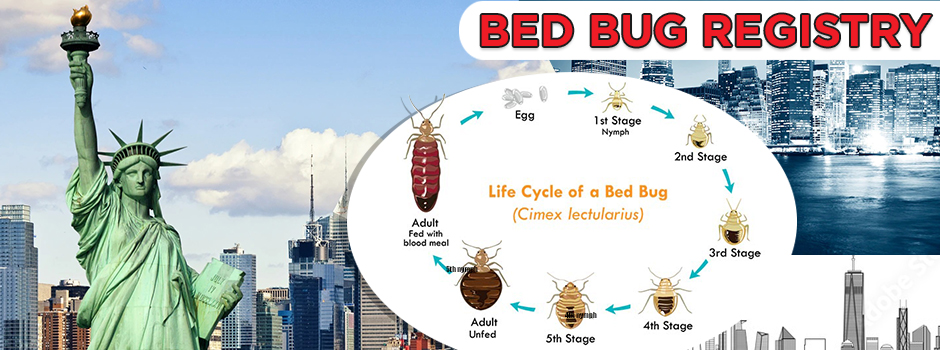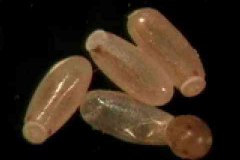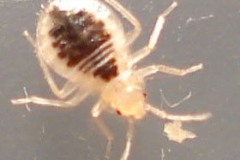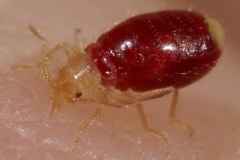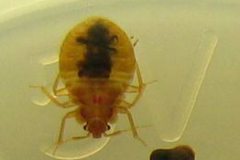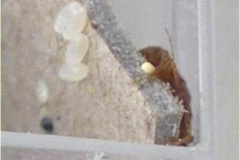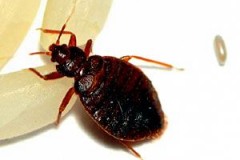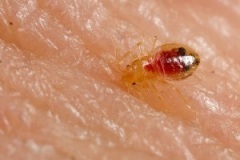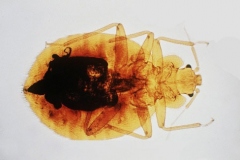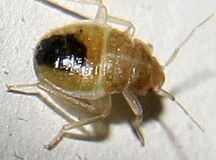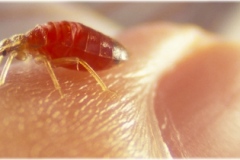Extension > Garden > Insects > Traveler Q & A: Preventing bed bugs from hitchhiking to your home
Stephen Kells and Jeff Hahn, University of Minnesota Extension Reviewed 2006
Different stages of bed bugs (1/16 inch to 1/4 inch in size) and fecal spots
Bed bugs on a backpack
This factsheet provides some specific steps that you can use to prevent hitchhiking bed bugs from infesting your home. There is nothing magic about the way these pests initiate an infestation. They are simply parasites that look to resting persons or animals for a meal and, once obtaining this meal, they travel back to a place of hiding.
The thing that makes bed bugs so challenging for detection and control is they have excellent abilities to squeeze into cracks and crevices and will often go unnoticed by the casual observer.
The majority of bugs will cluster around areas where people will rest, but a few of them will move off to hide in more remote areas. They shun light and if they are disturbed or if they suddenly feel exposed, they will attempt to move to quieter (and more remote) areas. It is this cryptic behavior that creates the challenge to dis-infesting articles that have been in areas of bed bug activity and cause the impression that they have special abilities that we cannot contend with.
The following are questions that are commonly asked by travelers and the recommendations you can use to prevent transport of bed bugs from an infested site.
Bed bugs are oval, flattened, brown, and wingless insects approximately 1/4" to 3/8" long (5-9 mm). They are similar in appearance to a wood tick. After the bug has taken a blood meal, its color will change from brown to purplish-red. Also after feeding, it is larger and more cigar-shaped making it appear like a different insect. Young bed bugs are much smaller (1/16 or 1.6 mm when they first hatch) and nearly colorless except after feeding, but resemble the adult in general shape. You may also find cast skins, which are empty shells of bugs as they grow from one stage to the next. After a blood meal, bed bugs deposit fecal spots (composed of digested blood) in areas adjacent to the feeding site or back at their hiding places.
You can only confirm that bed bugs are present by carefully inspecting each item. Pay attention to cracks, crevices, seams, and folds of material. Remember that bed bugs can be 1/16" to 1/4" and young, unfed bugs may be mostly translucent (see pictures). If you find bugs, then you have to be careful in containing the infestation. If you do not find bugs, but still suspect there may be an infestation, the steps mentioned below will provide peace-of-mind and ensure that you do not bring an infestation home.
Here is the original post:
Travel Q&A: Bed Bug Prevention - University of Minnesota Extension

 Residence
Residence  Location
Location 
